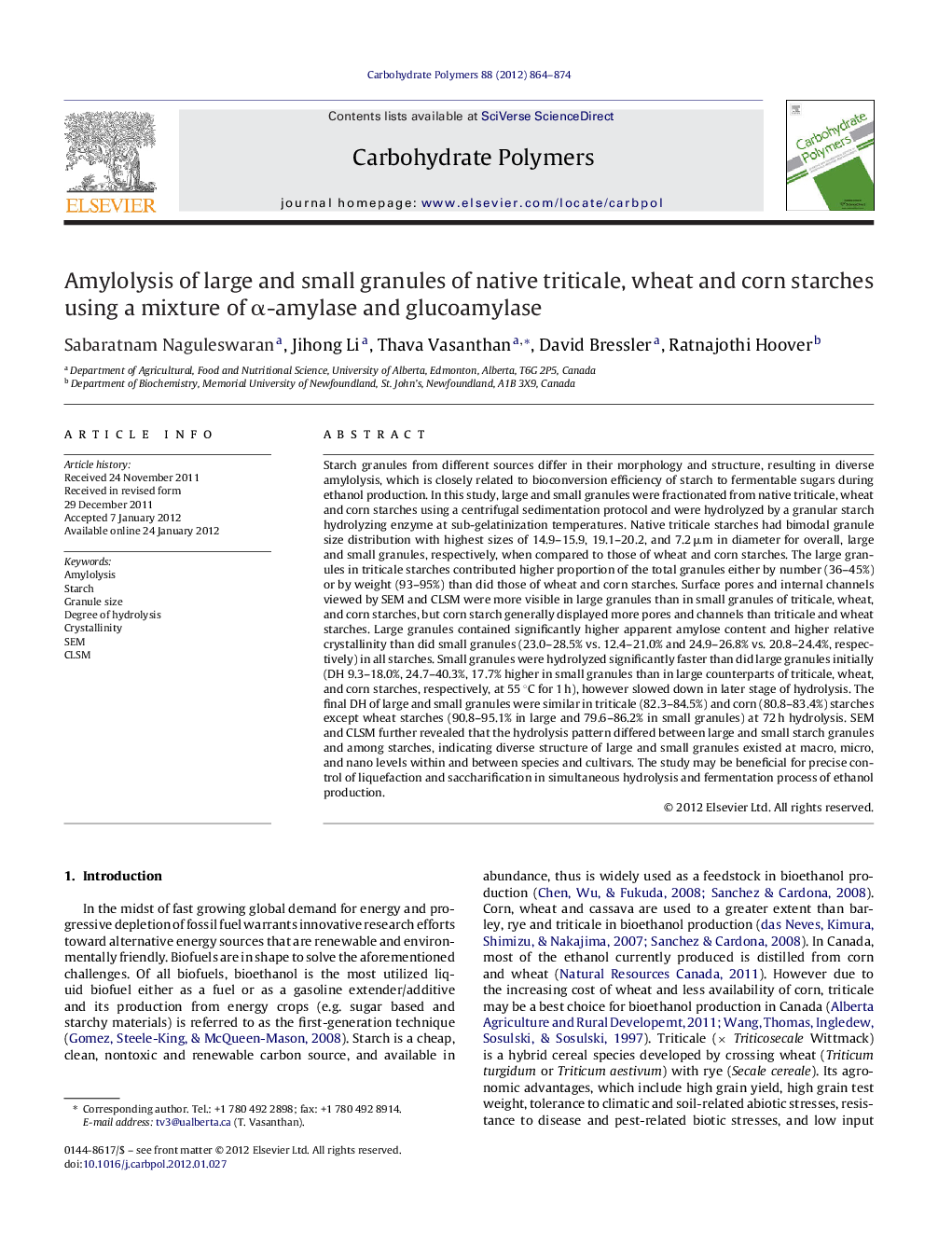| Article ID | Journal | Published Year | Pages | File Type |
|---|---|---|---|---|
| 1377268 | Carbohydrate Polymers | 2012 | 11 Pages |
Starch granules from different sources differ in their morphology and structure, resulting in diverse amylolysis, which is closely related to bioconversion efficiency of starch to fermentable sugars during ethanol production. In this study, large and small granules were fractionated from native triticale, wheat and corn starches using a centrifugal sedimentation protocol and were hydrolyzed by a granular starch hydrolyzing enzyme at sub-gelatinization temperatures. Native triticale starches had bimodal granule size distribution with highest sizes of 14.9–15.9, 19.1–20.2, and 7.2 μm in diameter for overall, large and small granules, respectively, when compared to those of wheat and corn starches. The large granules in triticale starches contributed higher proportion of the total granules either by number (36–45%) or by weight (93–95%) than did those of wheat and corn starches. Surface pores and internal channels viewed by SEM and CLSM were more visible in large granules than in small granules of triticale, wheat, and corn starches, but corn starch generally displayed more pores and channels than triticale and wheat starches. Large granules contained significantly higher apparent amylose content and higher relative crystallinity than did small granules (23.0–28.5% vs. 12.4–21.0% and 24.9–26.8% vs. 20.8–24.4%, respectively) in all starches. Small granules were hydrolyzed significantly faster than did large granules initially (DH 9.3–18.0%, 24.7–40.3%, 17.7% higher in small granules than in large counterparts of triticale, wheat, and corn starches, respectively, at 55 °C for 1 h), however slowed down in later stage of hydrolysis. The final DH of large and small granules were similar in triticale (82.3–84.5%) and corn (80.8–83.4%) starches except wheat starches (90.8–95.1% in large and 79.6–86.2% in small granules) at 72 h hydrolysis. SEM and CLSM further revealed that the hydrolysis pattern differed between large and small starch granules and among starches, indicating diverse structure of large and small granules existed at macro, micro, and nano levels within and between species and cultivars. The study may be beneficial for precise control of liquefaction and saccharification in simultaneous hydrolysis and fermentation process of ethanol production.
► Large granules in triticale starches were high proportion by both number and weight. ► Large granules of all starches had higher amylose content and crystallinity than smalls. ► Small granules were hydrolyzed significantly faster than did large granules initially. ► SEM and CLSM revealed that hydrolysis pattern differed between large and small granules.
